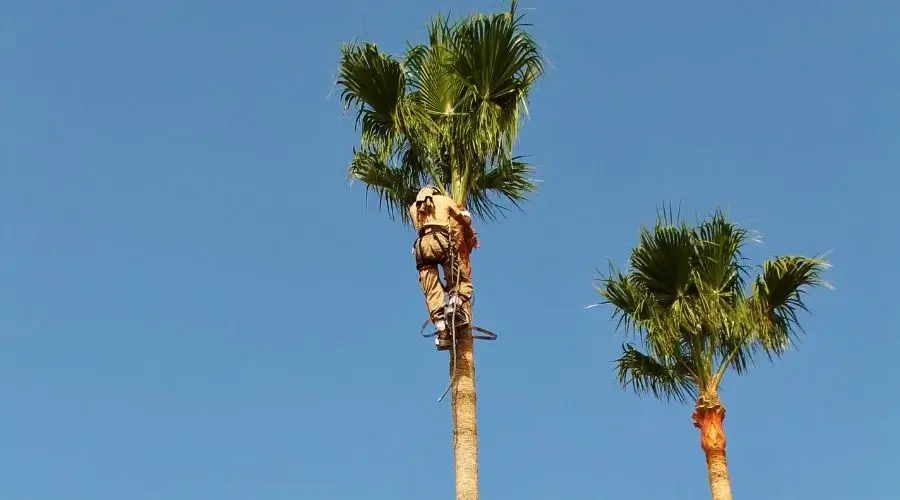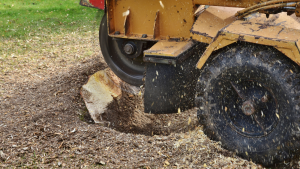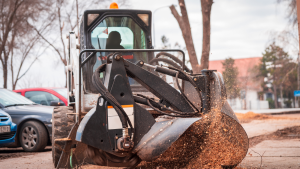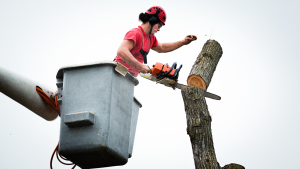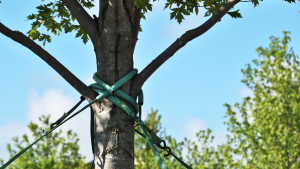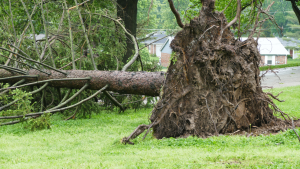Trimming tall trees is a challenging task that demands expertise, specialized equipment, and strict safety measures. Whether it’s for tree health, aesthetics, or safety reasons, professional tree trimmers play a crucial role in maintaining towering arboreal giants. In this article, we will explore the techniques and equipment professionals use to trim extremely tall trees, illustrated with an example scenario.
The Scenario
A majestic oak tree stands at a towering height of 80 feet in a residential backyard, and the homeowners are concerned about its overgrown limbs, which pose a risk to their property during strong winds.
1. Safety First
Safety is paramount in tree trimming, especially when dealing with exceptionally tall trees. Professional tree trimmers are trained to assess the risks and take precautions. In our scenario, they would start by setting up a safe work zone, cordoning off the area beneath the tree to prevent any accidents.
2. Climbing or Aerial Lifts
For extremely tall trees like our 80-foot oak, professionals have two primary options for accessing the canopy: climbing or using aerial lifts.
- Climbing: Certified arborists, equipped with safety gear like harnesses and ropes, can ascend the tree. They use a series of secure knots and climbing techniques to reach the upper branches. Once there, they can prune the tree carefully.
- Aerial Lifts: For tall trees or when safety concerns are high, professionals often use bucket trucks or cherry pickers to access the upper canopy. These vehicles offer a stable platform for precise trimming, and they can reach towering heights with ease.
3. Pruning Techniques
Proper pruning techniques are crucial to maintain the tree’s health while addressing safety concerns. Professional trimmers employ the following methods:
- Crown Reduction: In the case of our 80-foot oak, the crown might be reduced to reduce the risk of falling branches during storms. Arborists will carefully select and trim branches back to healthy growth points, maintaining the tree’s overall health.
- Thinning: Thinning out the canopy involves selectively removing branches to improve air circulation and reduce wind resistance. This method can reduce the risk of storm damage in tall trees.
4. Use of Specialized Equipment
Professionals utilize various tools and equipment to facilitate the trimming process, such as long-reach pruners, chainsaws, and hand saws. In the case of our tall oak tree, pole saws and loppers with extension poles may be used for branches that are not accessible from the ground. These tools enable precise cuts without damaging the tree.
5. Assessing the Health of the Tree
Professionals inspect the overall health of the tree to ensure it is suitable for trimming. In our scenario, if the 80-foot oak tree shows signs of disease or decay, the arborist might recommend a thorough evaluation and, if necessary, discuss the possibility of removing the tree to eliminate safety risks.
6. Cleanup and Waste Removal
Once the trimming is complete, professionals ensure that the area is clean and safe. Debris, branches, and leaves are removed from the site, and the homeowner is left with a healthier, safer, and more visually appealing tree.
Trimming extremely tall trees requires a combination of expertise, safety measures, and specialized equipment. Professional tree trimmers like Joliet Tree Service play a vital role in maintaining the health, aesthetics, and safety of these towering giants. By following proper techniques and taking safety precautions, they can ensure the longevity and vitality of even the tallest trees, like the majestic 80-foot oak in our scenario.
